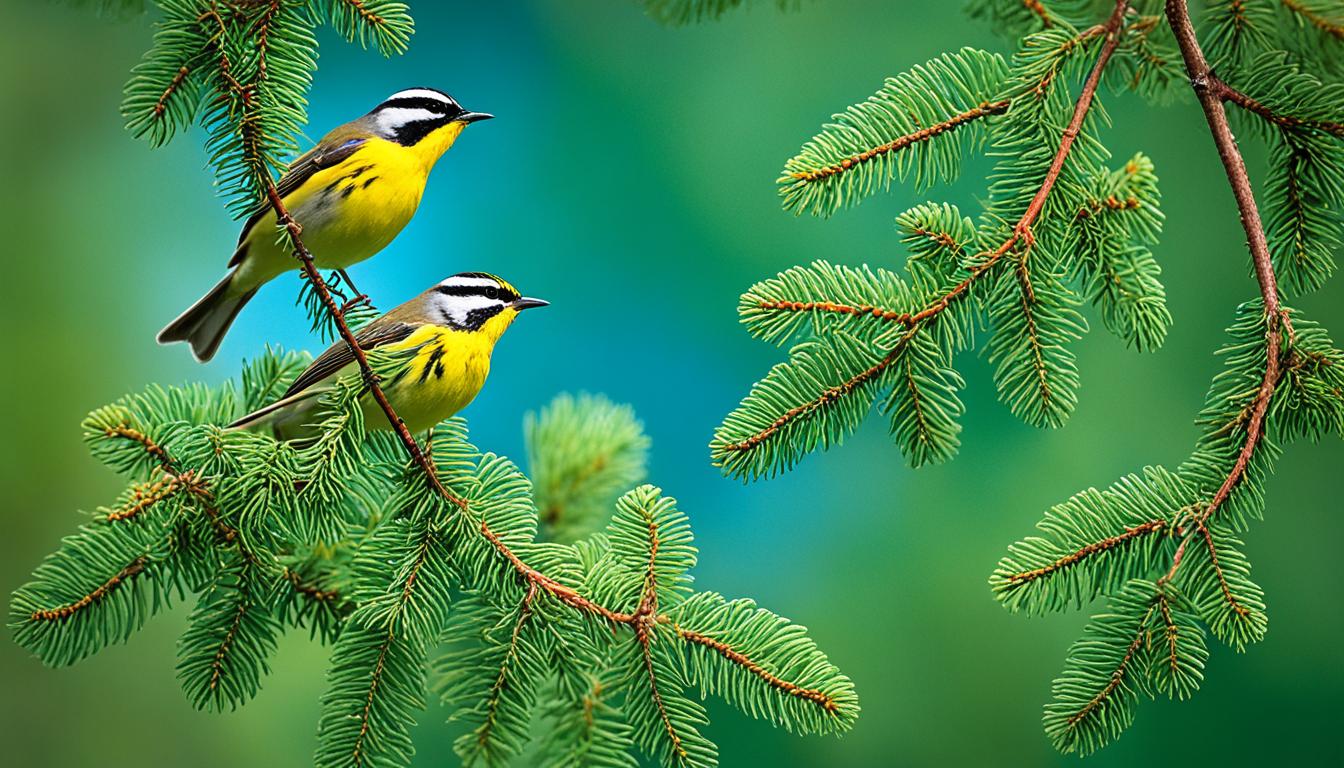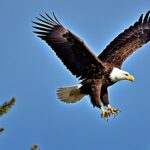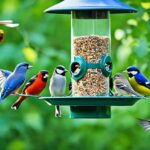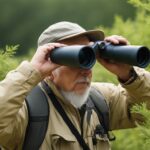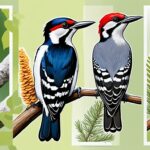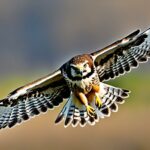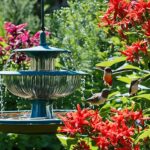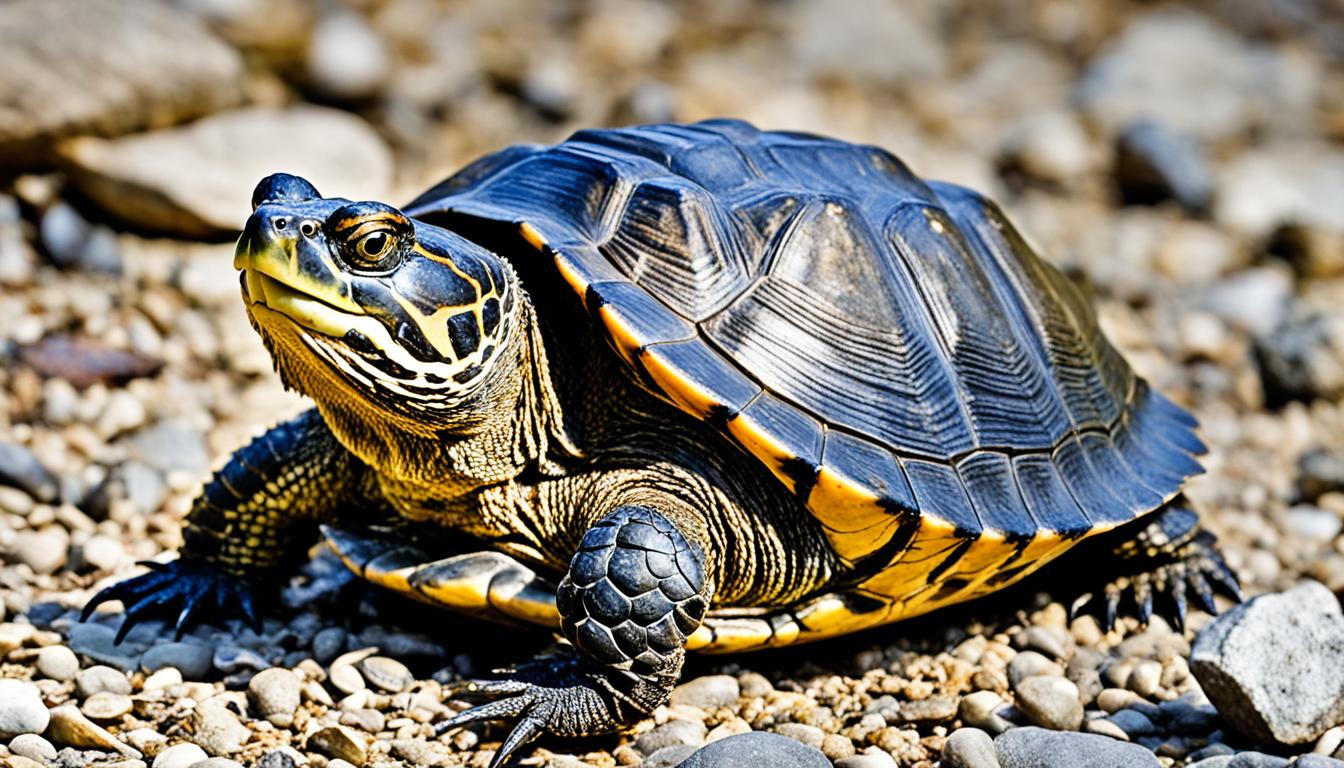Trying to figure out a warbler’s species can be tough. You might wonder if it’s an American Redstart, Arctic Warbler, or Yellow Warbler. They are small but colorful, making them hard to tell apart. To tell the difference, look closely at their colors, how they act, their songs, where they live, and how they move around.
Noticing special colors and ways a warbler finds food helps. Also, using bird identification apps makes things simpler. Discover how to spot American warblers. Whether you’re in the U.S. or telling warbler types apart, these tips will make birdwatching more fun.
Recognizing Warbler Plumage Colors and Patterns
For birdwatchers aiming to improve *warbler identification*, understanding plumage colors and patterns is key. These colorful birds have unique markings that make them special. By observing these characteristics throughout the year, you can get better at telling warbler species apart.
Distinctive Color Markings
Looking at unique color patterns is a top *warbler identification tip*. Red Warblers are known for their bright red bodies and white cheek patches. Hooded Warblers have a striking yellow face with a dark head. Noting these specific colors will make identifying them easier.
Comparative Plumage Patterns
A useful *guide to USA warbler species* is comparing their patterns. Each warbler type has its own special look. For example, putting a Black-throated Blue Warbler next to a Black-throated Green Warbler shows their distinct backs. Learning to spot these differences will help you master warbler identification.
Seasonal Changes in Plumage
Warblers change their looks with the seasons. Males often get brighter markings during mating times. But as the year goes on, their colors can fade. For example, a Yellow Warbler is vivid yellow with chestnut highlights in its breeding season. In the rest of the year, it might look plain. Knowing these shifts in feather colors is vital.
To become better at recognizing warblers, follow these *warbler identification tips*. They focus on unique colors, compare patterns, and notice seasonal changes. These steps will improve your birdwatching and help you enjoy the variety of warblers in the USA.
Understanding Warbler Behaviors and Habits
Knowing about warbler behaviors can really boost your bird spotting skills. Different warbler species do unique things that help us tell them apart. Watch how they look for food and move during the year to spot them better.
Foraging Techniques and Movements
Each warbler has a special way of finding food, based on where they live and what they eat. Take the Black and White Warbler, for example. It acts like a nuthatch, slowly going up tree trunks looking for bugs. If you see a warbler moving in a certain way, it can help you figure out which one it is.
Migratory Patterns and Seasons
Warblers fly far between where they breed and where they spend the winter. As they travel, they might change how they look and even act. The American Redstart is known for flicking its tail open while it migrates. Recognizing these patterns and actions is key to knowing the different warblers.
Using Bird Songs for Warbler Identification
Identifying warblers in North America is all about their unique songs. Each warbler species has a different call. This makes knowing bird songs key for bird lovers.
Let’s see how to recognize common warbler songs. Plus, learn how to use bird song apps for better birdwatching.
Recognizing Common Warbler Songs
It’s a rewarding challenge to spot warblers by their songs. Each warbler has its own melodious call. For example, the Yellow Warbler sings “sweet-sweet-sweet, I’m so sweet.” The American Redstart’s song has high notes and pauses. By listening and watching, you will get better at spotting them.
How to Use Bird Song Apps
Bird song apps are game-changers for identifying warblers. They compare recorded bird songs to a database. Apps like Merlin Bird ID and Song Sleuth offer automatic song recognition. This helps you identify different warblers fast. It enriches your birdwatching experience.
Warbler Habitats and Their Geographic Locations
It’s key for bird lovers to understand where warblers live. The USA has a wide range of habitats, each attracting different warbler types.
Preferred Habitats of Common Warblers
Many warblers like specific places to live. Northern Parula loves mature forests with a thick cover. On the other hand, Common Yellowthroat is found in marshes and wetlands. Knowing these preferences helps find and identify them.
Geographic Range and Migration Routes
Warblers cover vast areas and travel far during migration. Take the Black-throated Blue Warbler, for instance. It breeds in the east US but spends winters in the Caribbean. Knowing their locations helps in spotting them at the right times.
| Warbler Species | Breeding Habitat | Wintering Habitat |
|---|---|---|
| Golden-cheeked Warbler | Ashe Juniper and oak woodlands | Southern Mexico and Central America |
| Yellow Warbler | Woodlands and wetlands | Central and South America |
| Blackpoll Warbler | Boreal forests | Amazônia |
Finding Warblers in Different Environments
Looking for USA warblers means knowing their varied homes. Prairie Warbler likes brushy fields and open areas. Yet, Magnolia Warbler prefers dense forests. Understanding their needs and where they live helps find them.
Field Guide Essentials for Warbler Identification
Identifying warblers needs a precise tool, and a good field guide is that tool. It’s key for both new and advanced bird watchers. A field guide gives you solid info on each species, clear pictures, and detailed distribution maps.
To get the most from your birdwatching, choosing the right field guide is important. And knowing how to use it makes a big difference.
Recommended Field Guides
Not all field guides are the same. Here are a few of the best:
- The Sibley Guide to Birds
- National Geographic Field Guide to the Birds of North America
- Peterson Field Guide to Birds of North America
Tips for Effective Field Guide Use
Making good use of your field guide can make bird watching better. Here are some tips:
- Familiarize Yourself with the Layout: Learn the guide’s layout and how to find what you need before you go out.
- Compare Observed Warblers: Match the birds you see with those in the book. Look for the key features discussed in the guide.
A properly used field guide sharpens your ability to spot details. This can turn every bird watching trip into a rich experience. Just remember, the guide is only as good as your skill in using it.
Identifying Warblers by Size and Shape
When it comes to warblers, noting their size and shape is key. This info helps a lot in telling the different kinds apart. Each warbler has unique traits that stand out if you look closely.
Typical Warbler Anatomy
Warblers have short and thin bills for picking off insects. The way their primary feathers stick out beyond the secondary ones also changes with each type. Warbler tails come in various lengths too, which is important for identifying them.

Comparing Sizes Across Species
Warblers differ in size and shape, making identification a fun challenge. Looking at their distinct features can guide you to the right bird. This method is especially helpful with less obvious markings.
| Species | Bill Length | Primary Projection | Tail Length | Body Size |
|---|---|---|---|---|
| American Redstart | Short | Medium | Medium | Small |
| Yellow Warbler | Short | Short | Medium | Small-Medium |
| Black-and-white Warbler | Short | Long | Short | Small |
By comparing the sizes and features of warblers, you get better at naming them. This focus on details improves your bird-watching skills. It’s like putting together a puzzle to recognize each bird species.
Challenges of Identifying Warblers During Migration
Identifying warblers gets harder during migration times. This is because their colors and the environment change. The bright colors usually seen in breeding season fade away.
Seasonal Plumage Variations
Detecting warblers on their travels is about noticing these changing colors. Outside of breeding, their plumage gets less vibrant. This means males, who are brightest in breeding season, can look quite similar. Watching for even the smallest color differences helps during identification.
Behavioral Changes in Different Seasons
Warblers also change how they act, adding to the challenge. Their foraging and movement patterns shift as they face different climates. For example, a warbler used to foraging low might start searching in the treetops. Understanding these changes, along with the color shifts, is key for birders.
Using Technology in Warbler Identification
Today, bird lovers use technology to find and name warblers. They mix old ways with new tools. Bird ID apps help people match photos or songs to different warbler types. This makes birdwatching easier and better.
Bird Identification Apps and Tools
Apps have completely changed how we spot warblers. They look at bird photos and suggest what type it is. Merlin Bird ID and Audubon Bird Guide help in a big way. They let you upload photos, track where you are, and compare warbler species instantly.
Recording and Analyzing Bird Songs
Recognizing bird sounds is a big part of birdwatching. Apps for analyzing bird songs let you record and find out what birds you’re hearing. They match your recordings with their sound libraries. This is very helpful when seeing the birds is hard.
Using GPS for Tracking and Spotting
GPS helps track where warblers are. With GPS apps, you can jot down sightings and share them. This helps you and others keep good records. It also helps in science projects. These projects use the GPS data to learn about warblers’ travels.
Using these tools in birdwatching makes it more fun and accurate. As you use them, spotting and naming warblers gets easier and more enjoyable.

